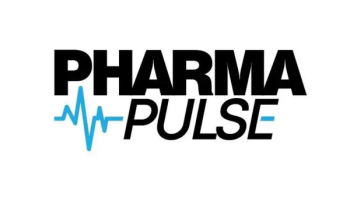
Modernizing GxP Compliance in Life Sciences: The Role of Digital Tools and Validation Expertise
Key Takeaways
- Compliance in life sciences is vital for product quality, patient safety, and business viability, with GxP guidelines ensuring high standards across operations.
- Validation is crucial for GxP compliance, providing documented evidence that systems perform reliably, especially in complex biopharmaceutical processes.
In an era of increasing regulatory complexity, life sciences organizations are modernizing GxP compliance through digital tools like eQMS, cloud platforms, and automated validation, while expert validation services remain essential for aligning these technologies with real-world workflows and inspection readiness.
In the highly regulated world of life sciences, compliance isn’t just a box to check; it is the foundation of product quality, patient safety, and business viability.
GxP guidelines, encompassing all aspects from manufacturing and clinical trials to data management and personnel training, are designed to ensure that pharmaceutical and biopharmaceutical products meet the highest standards. But with regulatory expectations growing more stringent and operations becoming more complex, maintaining compliance has become significantly more challenging.
To navigate this evolving landscape, life sciences organizations are increasingly turning to technology and the specialized services that support it.
Why validation still matters
At the heart of GxP compliance lies validation, the documented evidence that a system, process, or piece of equipment reliably performs its intended function.
Whether it's a quality management system, clinical trial software, or a manufacturing line, validation ensures that regulators are assured the system will not jeopardize product integrity or patient safety.
For biopharmaceutical companies, the inherent variability of biological systems adds a layer of complexity to process validation, demanding even more rigorous documentation and control strategies to ensure repeatability and regulatory approval. This complexity is compounded by the challenge of maintaining data integrity across electronic systems, which must comply with regulations such as 21 CFR Part 11 and EU Annex 11.
Despite the critical role validation plays, many organizations still rely on outdated documentation methods and manual processes that introduce risk and inefficiency.
For small to mid-sized companies, the stakes are high, but the resources are often limited. This is where technology, coupled with external validation expertise, creates a measurable impact.
How technology enables smarter compliance
Modern digital tools are reshaping GxP compliance by enabling automation, improving traceability, and increasing visibility into regulatory readiness. Key technologies include:
- Electronic quality management systems (eQMS): eQMS platforms centralize CAPA, deviation, training, and audit processes into a single digital environment. These systems support version control, electronic signatures, and validated workflows, reducing manual effort and improving consistency across compliance tasks.
- Electronic document management systems (EDMS): A strong EDMS helps companies manage regulated content throughout their lifecycle, replacing paper-based or ad hoc systems with structured, compliant processes. Features like audit trails and secure access controls are essential for meeting documentation and inspection requirements.
- Cloud-based solutions: Secure cloud platforms offer flexibility and scalability, making it easier for teams to collaborate globally while maintaining data integrity. Cloud solutions designed for regulated industries typically include built-in compliance features such as encryption, access control, and automated backups.
- Automated validation and monitoring tools: Automation tools streamline validation efforts by executing tests, tracking changes, and generating compliant documentation. Real-time compliance monitoring can also help organizations identify issues early and always maintain inspection readiness.
- Analytics and dashboards: Modern analytics provide real-time insight into quality and compliance metrics. Dashboards enable quality leaders to monitor performance trends, identify potential risks, and prioritize remediation, transforming compliance data into actionable intelligence.
In bioprocessing specifically, digital tools are addressing long-standing GxP challenges by automating documentation, enhancing traceability, and improving oversight.
Tools such as electronic batch records (EBR) and manufacturing execution systems (MES) enable real-time tracking of critical parameters, ensuring consistency across batches.
Supervisory control and data acquisition (SCADA) platforms and automated validation systems enable the early detection of deviations, thereby reducing the need for manual intervention in complex biological processes.
Meanwhile, digital QMS and learning management systems (LMS) strengthen compliance through structured training, change control, and audit readiness.
Why technology alone isn’t enough
Even with the right systems in place, successful compliance requires thoughtful implementation and ongoing oversight. Software must be validated per regulatory expectations and integrated into SOPs, risk assessments, and training programs.
This is where expert validation services add critical value.
By guiding system implementation, developing risk-based validation protocols, and aligning technology with GxP expectations, these partners help companies go beyond deployment to actual inspection readiness.
“Technology enables incredible efficiency, but sustainable compliance requires more than just the right tools,” says Sailaja Sreeramaneni, manager of validation services, Conexus Solutions, Inc. “We see companies struggle when they implement systems without aligning them to real-world workflows or regulatory expectations. That’s where strategic validation services make the difference—they bridge the gap between implementation and inspection readiness.”
Best practices for digital GxP compliance
To maximize the benefits of digital solutions, organizations should take a structured approach to implementation and validation:
- Start with a regulatory gap assessment: Map your current systems and processes to applicable GxP guidelines to identify compliance risks and technology needs.
- Adopt a risk-based validation approach: Tailor validation efforts based on system criticality and regulatory impact. Not every system requires the same level of rigor.
- Follow structured frameworks like GAMP 5: Frameworks such as GAMP 5 provide a lifecycle-based approach to validating systems in regulated environments. Key activities include Installation Qualification (IQ), Operational Qualification (OQ), and Performance Qualification (PQ), all of which are tied to the intended use.
- Develop SOPs and strong governance: Ensure that procedures for using and maintaining systems are clearly defined and controlled. This includes robust management to ensure continued compliance.
- Train staff thoroughly: Even the best tools are ineffective without proper use. Employees must understand not only how systems work, but also how they support GxP principles and their specific responsibilities.
- Conduct ongoing audits and revalidations: Compliance is not static. Systems must be routinely evaluated and revalidated to reflect changing regulations, processes, or technologies.
Looking forward
As regulators continue to emphasize data integrity, traceability, and real-time monitoring, the role of digital tools in GxP compliance will only expand.
Emerging technologies, such as artificial intelligence and predictive analytics, offer exciting potential for early risk detection and continuous quality improvement. But even as innovation accelerates, the fundamentals remain unchanged: systems must be validated, processes controlled, and documentation maintained.
With the right combination of digital tools andvalidation support, life sciences organizations can not only meet today’s regulatory demands but also build a foundation for scalable, inspection-ready operations in the future.
About the Author
Akshay Kapadia is the CEO of Conexus Solutions.
Newsletter
Stay ahead in the life sciences industry with Pharmaceutical Commerce, the latest news, trends, and strategies in drug distribution, commercialization, and market access.




